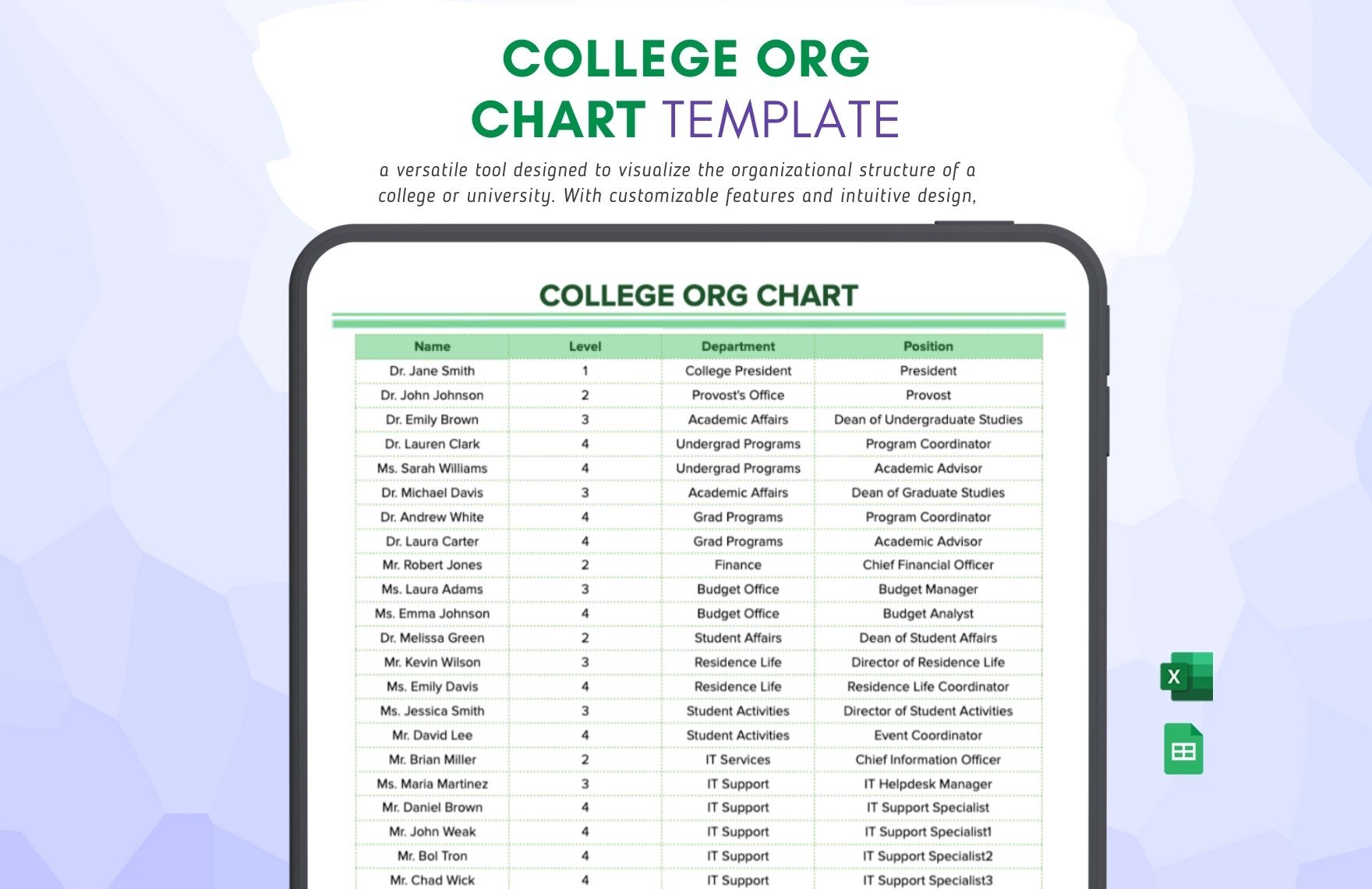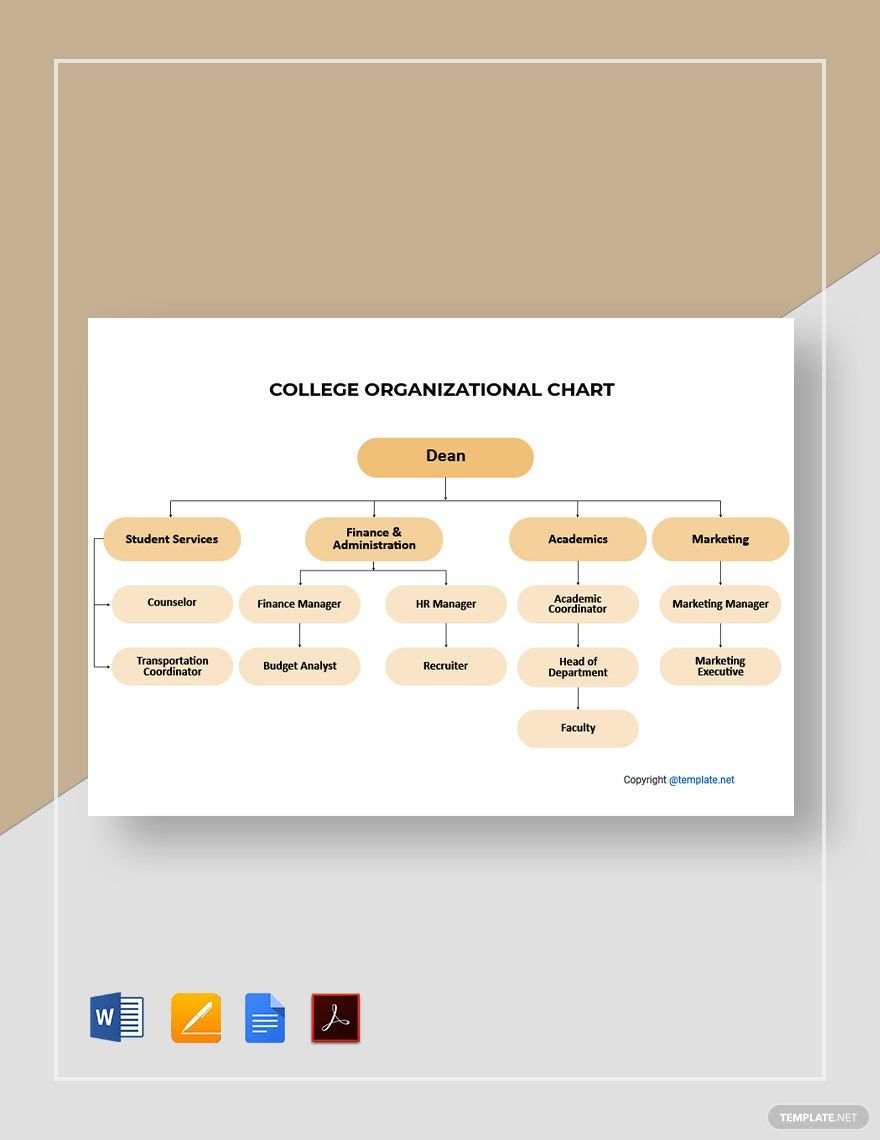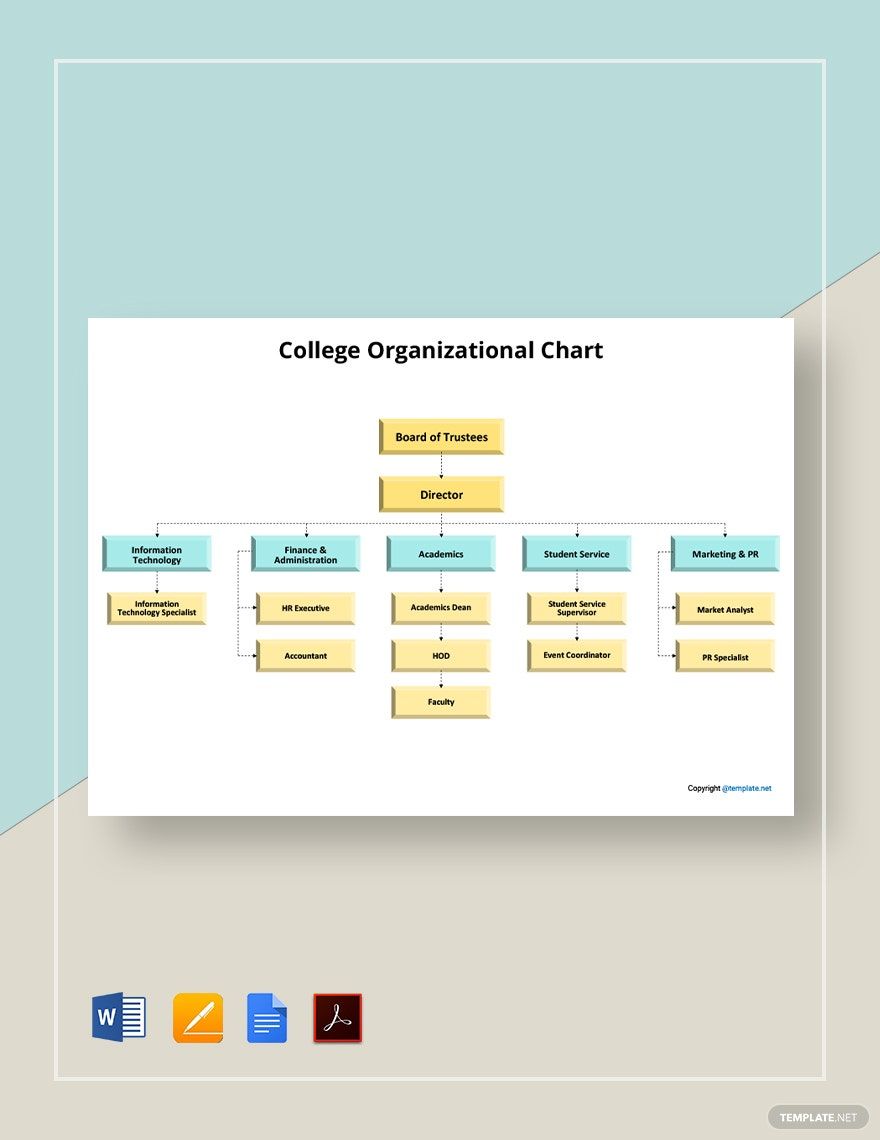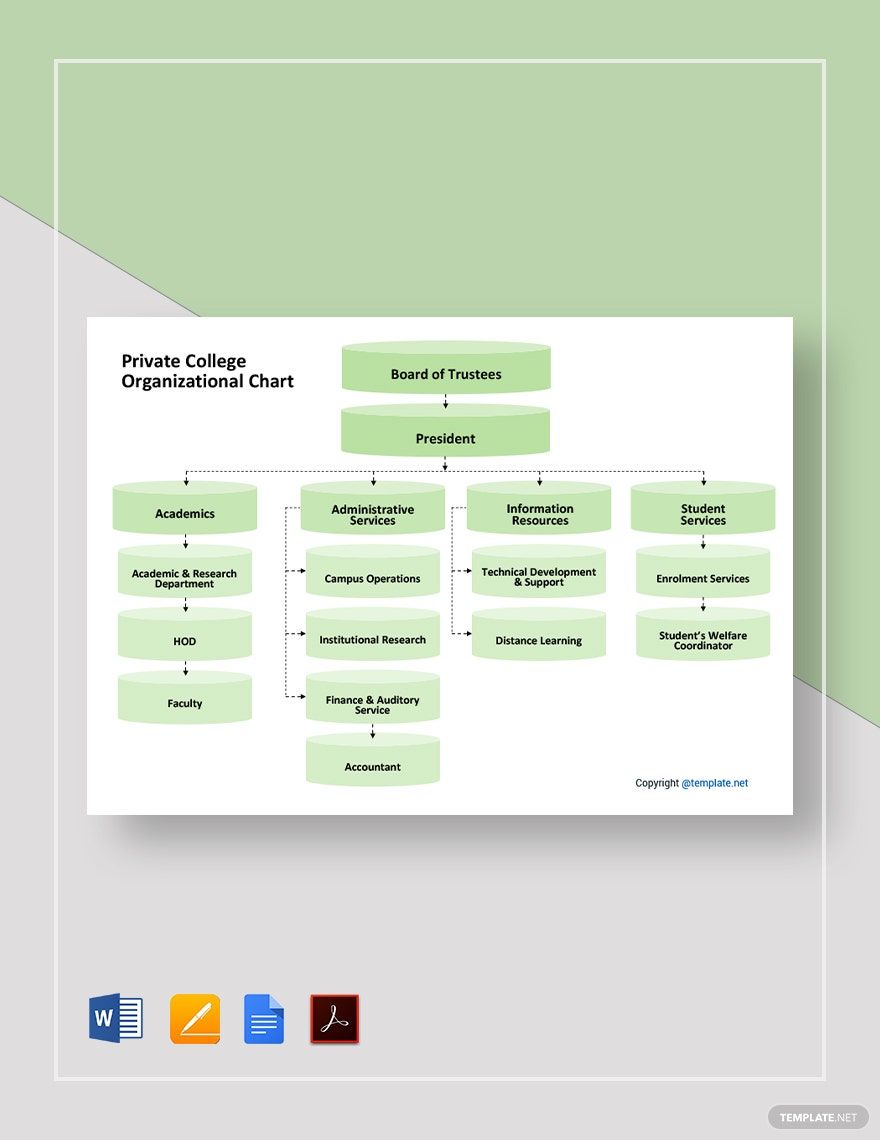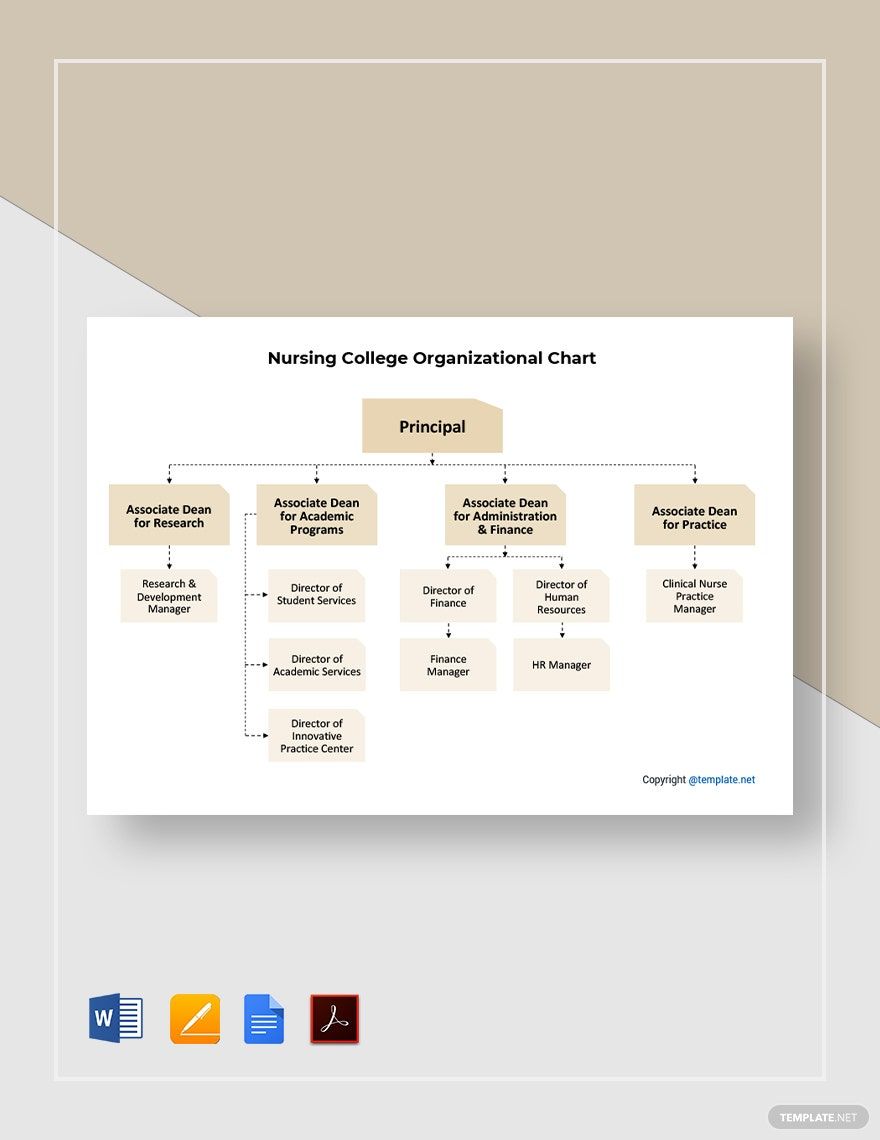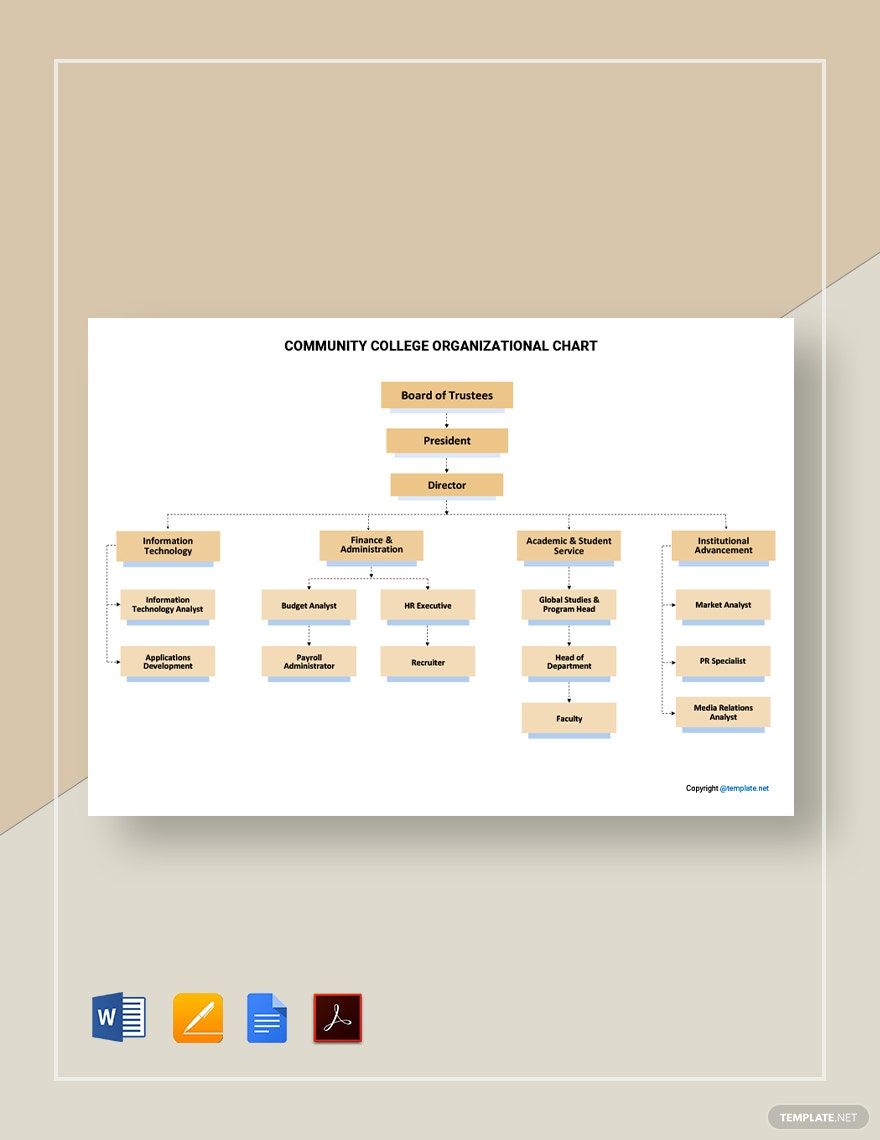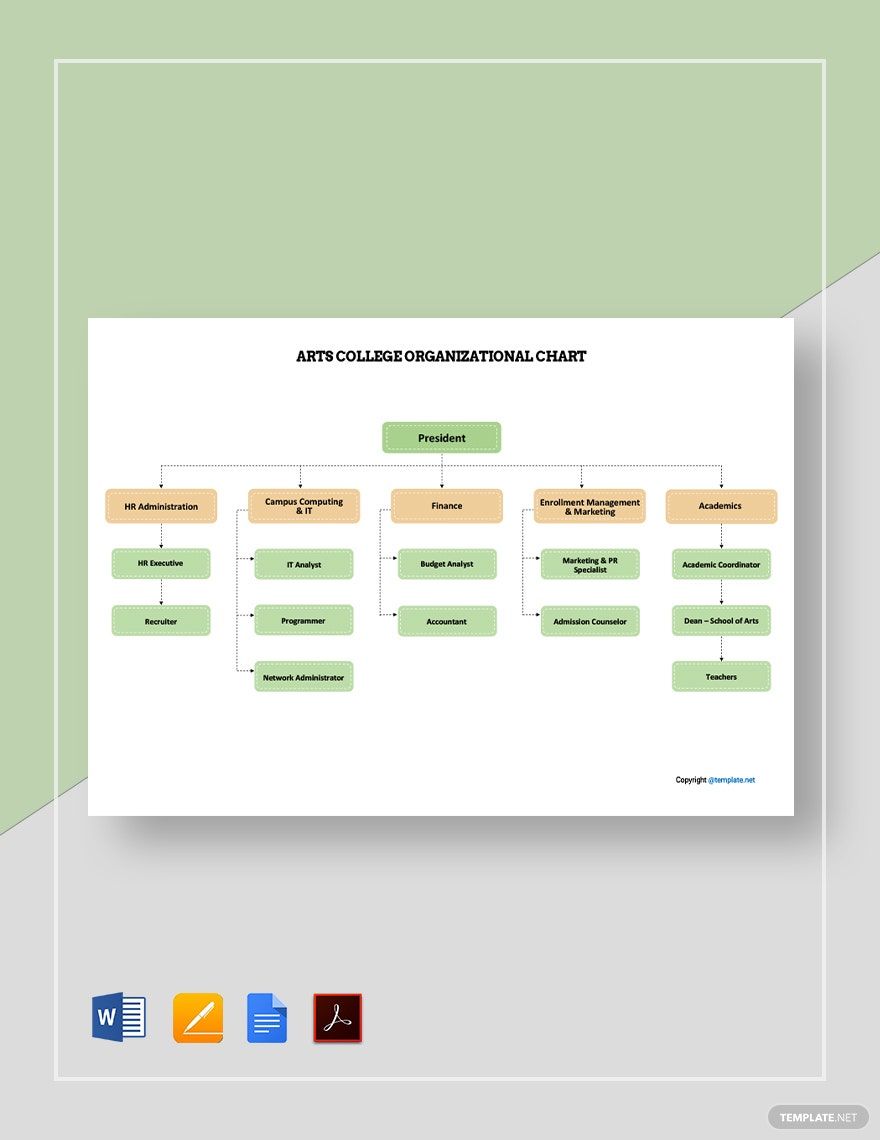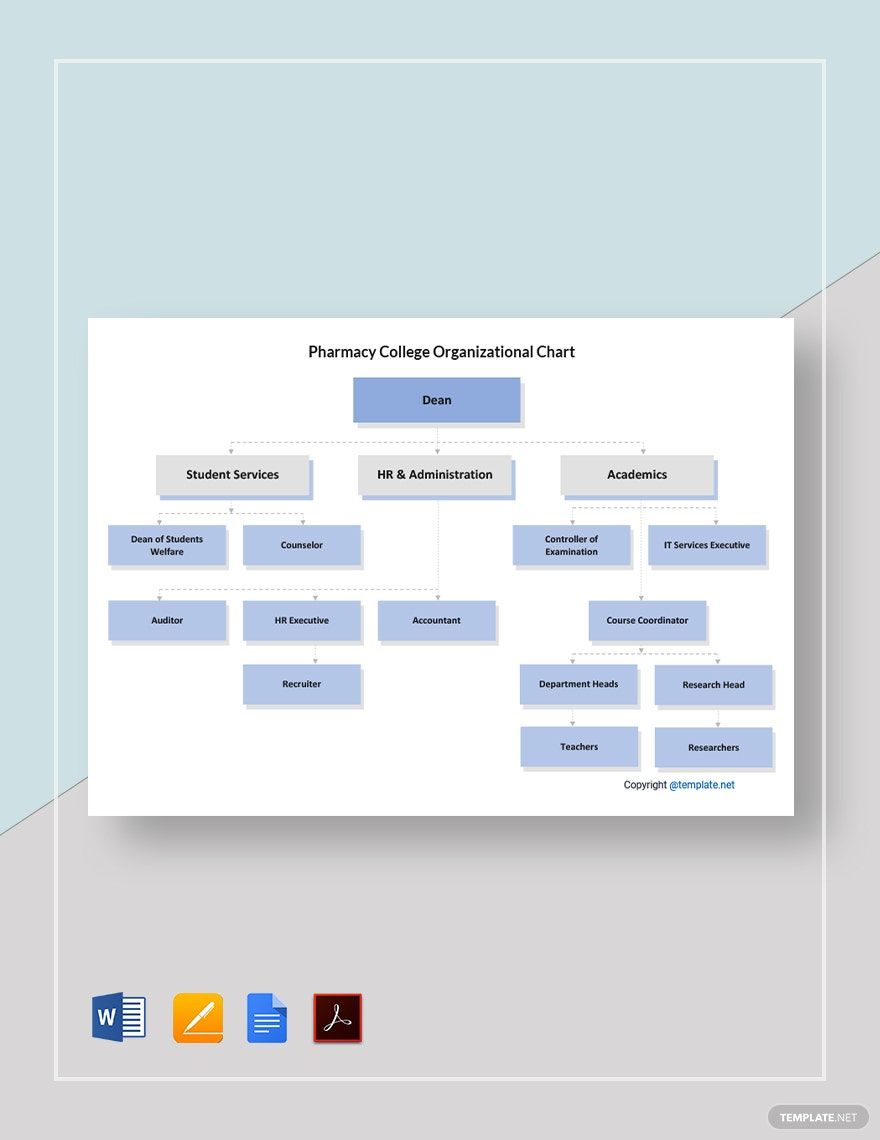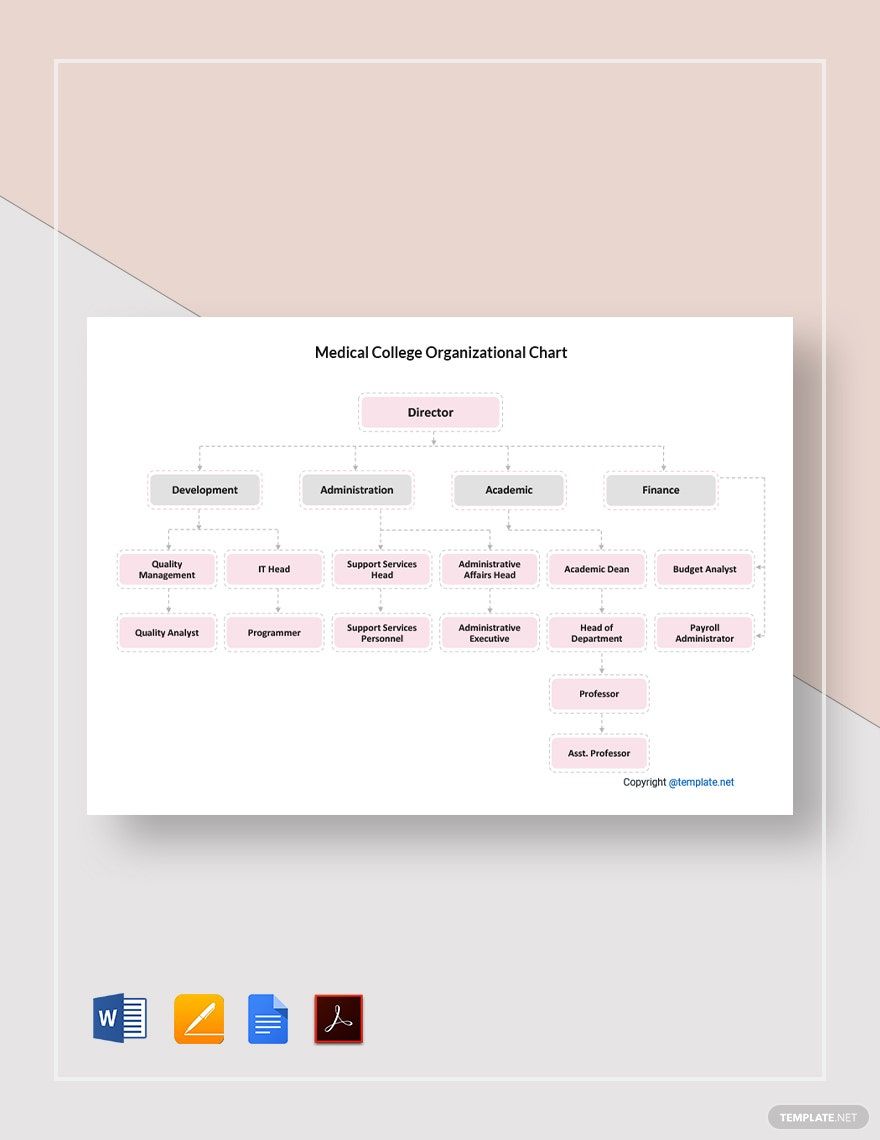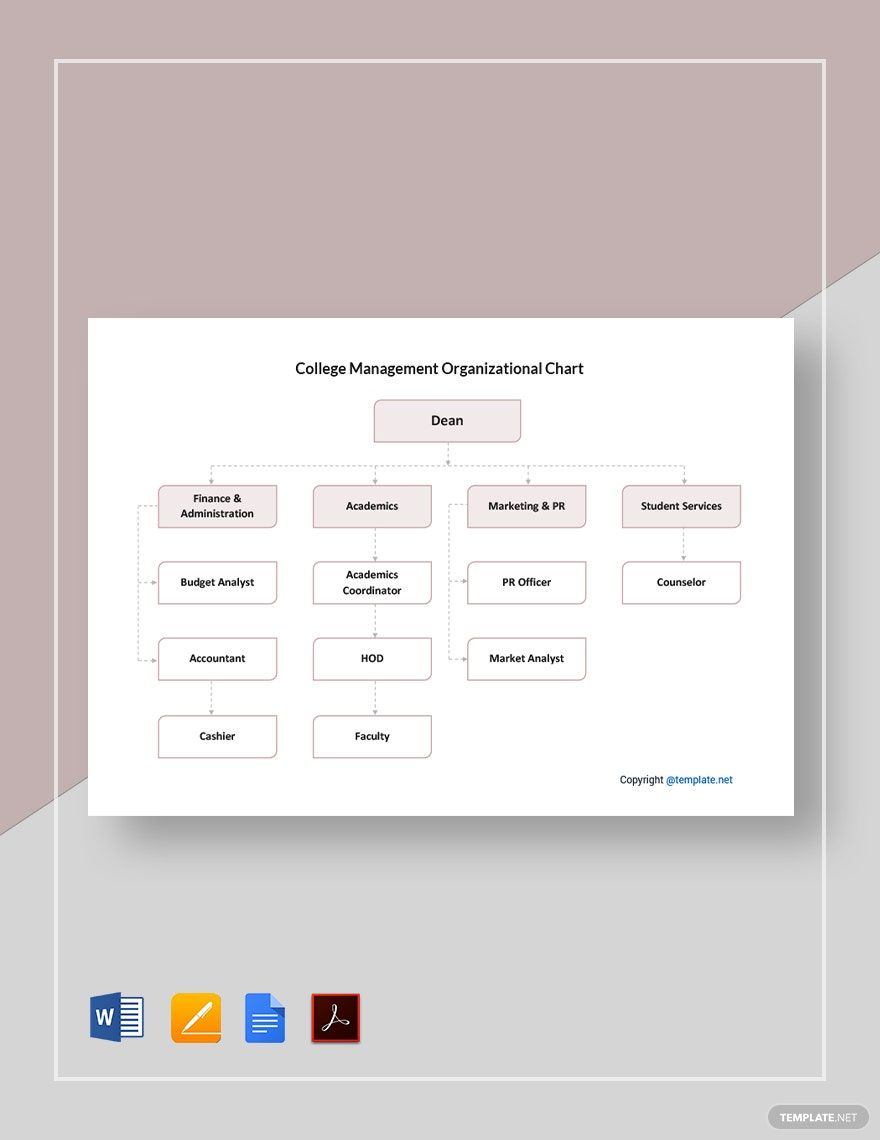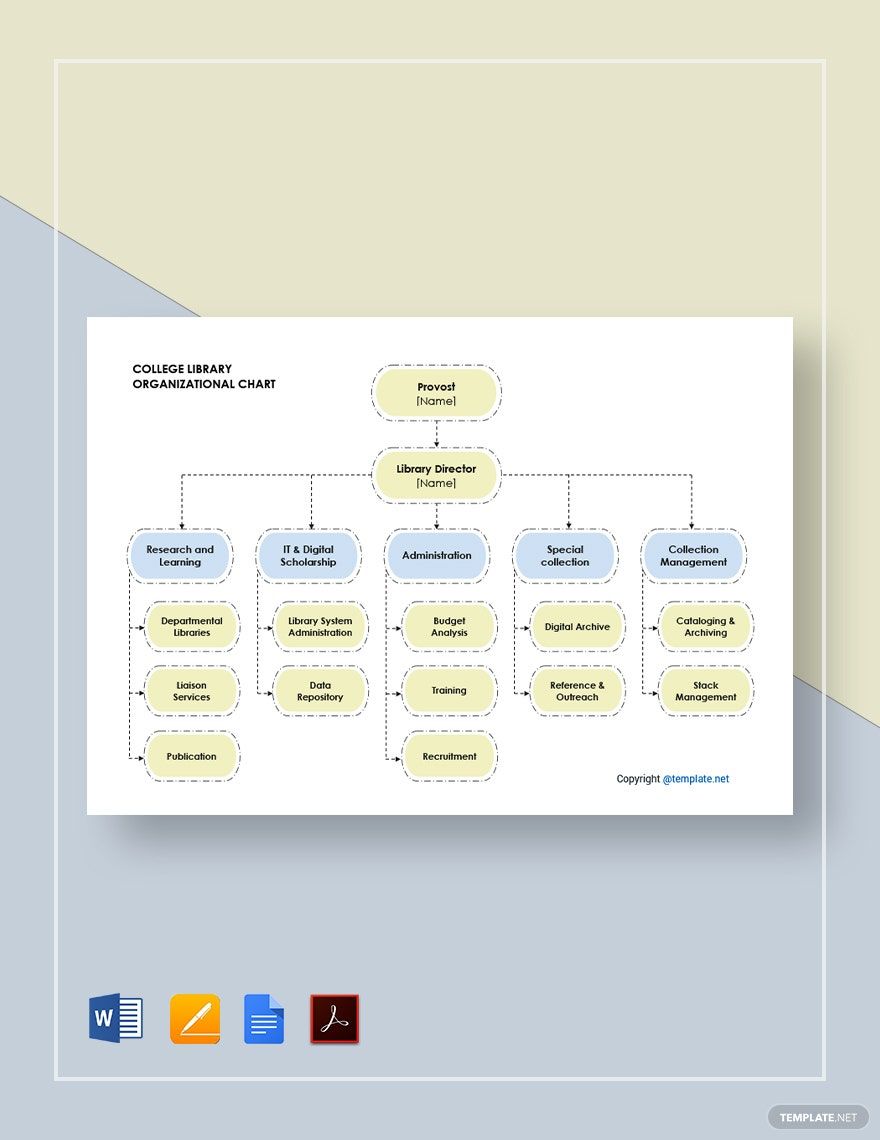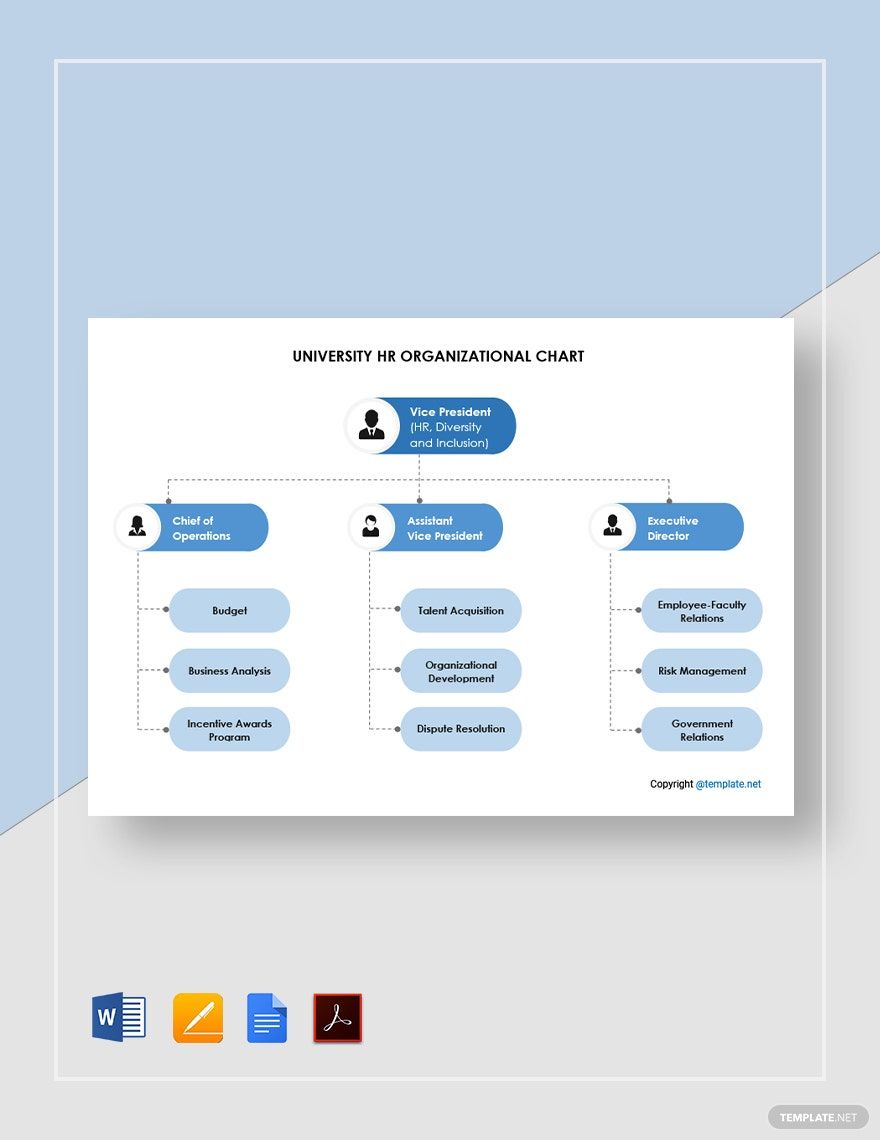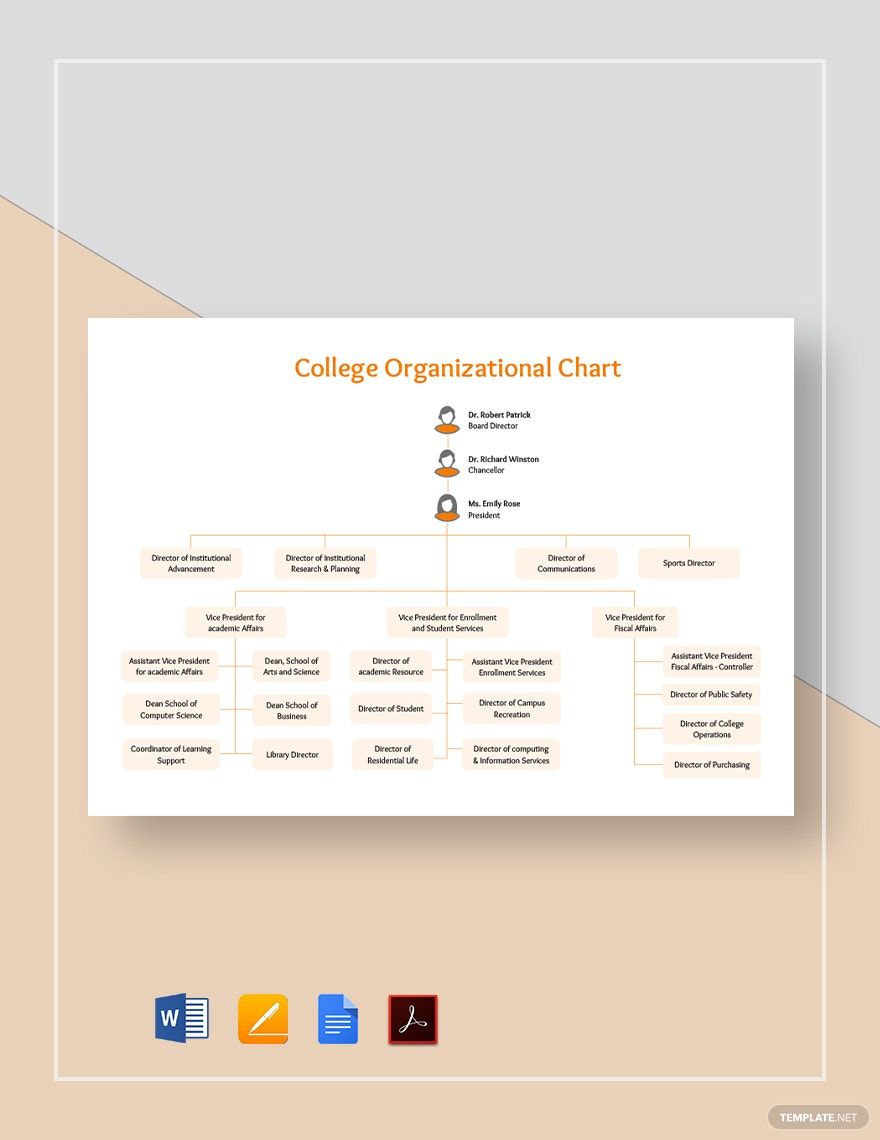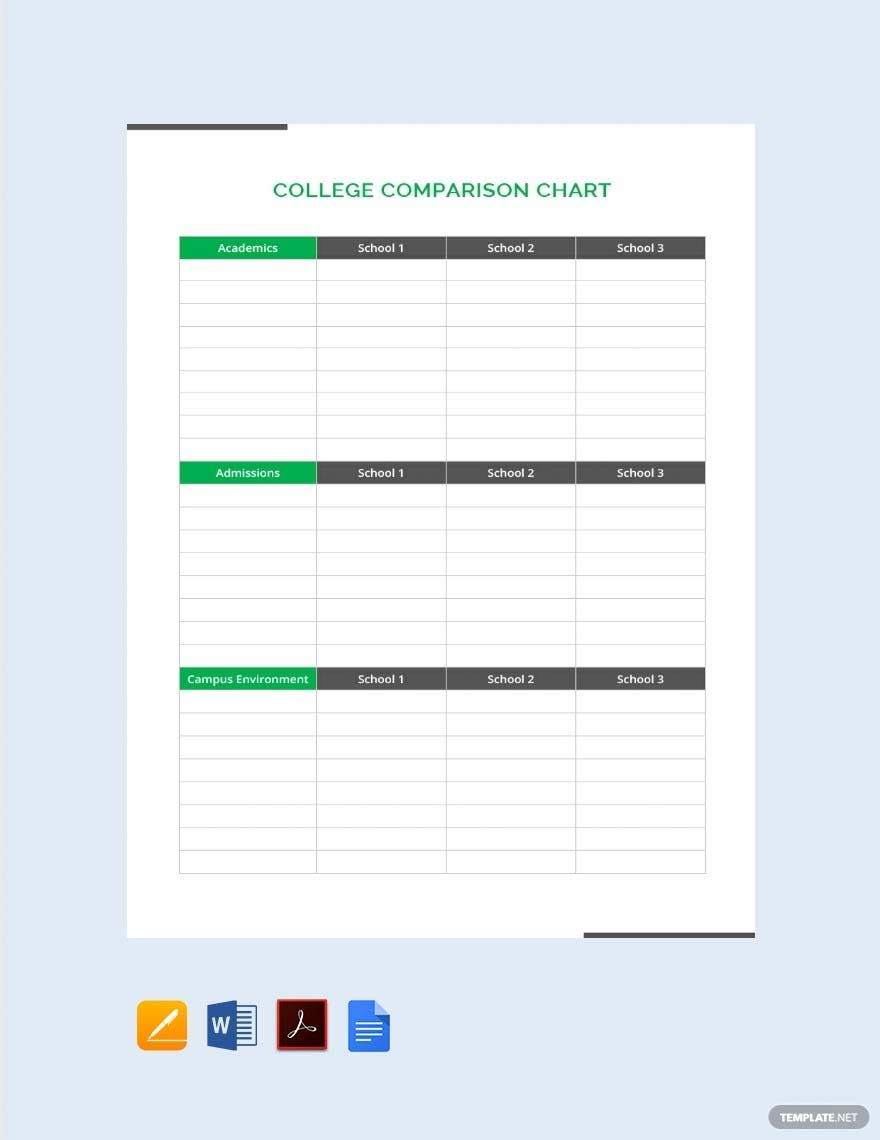Bring Your Vision of an Organized Campus to Life with College Organizational Chart Templates from Template.net
Keep your academic institution engaged, streamline communication, and enhance departmental efficiency with College Organizational Chart Templates from Template.net. Perfect for educational administrators and faculty leaders, these templates empower you to visually map out your college's organizational structure with ease. Whether you're looking to introduce a new department head or promote collaboration across different faculties, our templates provide the perfect framework. Included are customizable fields for names, titles, and contact information, allowing you to tailor each chart to your specific needs. Furthermore, no design experience is required, and with professionally crafted layouts, you can ensure a polished and cohesive look—ideal for both print and digital distribution across campus networks.
Discover the many chart templates we have on hand, specifically crafted for colleges and universities, offering a perfect blend of functionality and style. Simply choose a design that resonates with your institution's identity, swap in your logos and photos, and tweak colors and fonts to maintain brand consistency. Enhance your charts with easy drag-and-drop icons and graphics or add animated effects for dynamic presentations. The possibilities are endless, and anyone can master the process without previous design skills. Enjoy the regularly updated templates and fresh designs added weekly, ensuring your resources remain current and relevant. When you're finished, you have the flexibility to download or share your charts via link, email, or export them for printing, making it ideal for use across multiple channels and fostering real-time collaboration among staff and faculty members.
